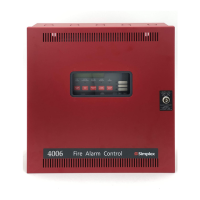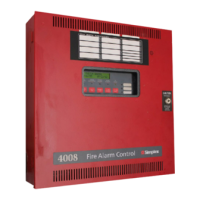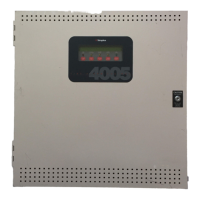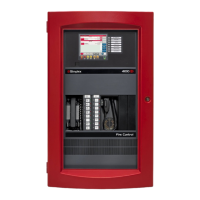4-11
Chapter 4 Networking
Step 4. Wiring Network Cards
Overview The nodes in the network now have to be wired together, so that the NIC in one host panel
connects to the NIC in the next panel. This section contains guidelines and instructions for NIC
wiring.
Wiring Guidelines Refer to the following guidelines whenever field wiring the NICs.
• Network nodes must be wired right to left port, regardless of the media type selected.
• Style 7 protection is achieved by wiring the nodes in a loop fashion. A single fault (except
an Earth fault) will cause the network to reconfigure for degraded Style 7 (Style 4)
operation. A second fault (except an Earth fault) will result in the network dividing into
two separate networks.
• Style 4 is achieved by wiring the nodes in a linear fashion. Style 4 networks are not
fault-tolerant and a single fault (except an Earth fault) will result in the network dividing
into two separate networks.
• Earth fault detection is performed on the left port only. When a network Earth fault occurs,
the trouble is only reported on the node whose left port is connected to the span.
• All 18 AWG wiring used with 4100-6056 Wired Media Cards must be twisted-shielded
pair. All 24 AWG (telephone cable) used with 4100-6056 must be twisted pair. When
shielded cable is used, the shield must be terminated to chassis Earth on the left port only.
• It is permissible to use mixed media in a network. For example, some spans may be “wired
media” while others are optical fiber or telephone modem.
• Each NIC has a jumper for selecting between network data rates of 57.6 kbps and
• 9.6 kbps. All cards in the network must be set for the same rate. (When modem media or
physical bridging is used, the data rate must be set for 9.6 kbps).
• Each NIC has a jumper for selecting between 8- and 9-bit network protocols. All cards in
the network must be set for the same network protocol. (When modem media or physical
bridging is used, the protocol must be set for 8-bit).
• All network wiring except the shield is supervised and power limited.
• When wiring leaves the building, 2081-9044 Overvoltage Protectors are required. One
overvoltage protector is installed where wiring leaves the building; another is installed
where wiring enters the next building.
Continued on next page
